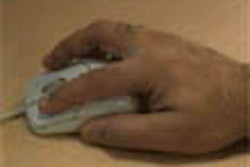An automatic conversion algorithm can provide for a smooth PACS data migration process, limiting the number of cases that will require subsequent human reconciliation, according to researchers from the University of Pennsylvania Medical Center (UPMC) in Philadelphia.
Users who need to migrate their legacy image data to new PACS networks actually have a few choices, including the option of maintaining both new and old systems, said Regina Redfern. This method suffers, however, from the need to support both networks indefinitely. Redfern spoke during a presentation at the 2004 Symposium for Computer Applications in Radiology (SCAR) in Vancouver.
Institutions might also choose to end support of the old system when requests for prior images fall below a particular threshold, Redfern said. Establishing that threshold is tricky, however.
Alternatively, users could decide to copy the legacy data over to the new system. But this approach ignores the likely differences in database structure between the two systems, and may not always be feasible, Redfern said.
Another option, data conversion, involves systematic matching of PACS image data to the RIS data during the migration process. As the RIS data isn't changing during the migration, it can be used as a reference standard for the PACS data that has been transferred into the new network.
The problem with this approach is that it has often produced an unacceptably low automatic matching rate, limited by the accuracy of information in the image headers, particularly when DICOM modality worklist is not employed, Redfern said.
In considering an automatic matching algorithm, the researchers wanted to see 100% accuracy in matching image sets to RIS records. In addition, the matching algorithm had to reconcile at least 90% of the data for this method to be considered viable.
"The reason we set the 90% threshold was because of the high cost of manual reconciliation and other limitations of manual reconciliation," she said.
The institution developed a new matching algorithm in conjunction with PACS vendor Siemens Medical Solutions (Malvern, PA). The institution went with a two-step approach: in the first step, all PACS image data were reconciled with the RIS records on a patient level.
Combinations of customer identifiers were used, including:
- Medical record number (MRN) and first three characters of last name.
- MRN and date of birth (DOB).
- MRN and first name.
- Last name, first name, and DOB.
A patient was considered identified if the exam data matched with the RIS data using a combination that included either the MRN -- or if one and only one match was returned when using the combination that relied on the first name, last name, and DOB, Redfern said.
After a successful patient match was identified, the data were then reconciled by exam in the second step of the process.
"Since the data had been matched at the patient level, all exam-level matching used the MRN as the patient identifier," she said.
Exam matching was done step-wise, until a rule was processed that returned one, and only one, match, she said. In the first rule, the MRN and accession number had to match, and the RIS study completion date and time had to be within 48 hours of the PACS study completion time. This step yielded a match rate of less than 1%.
The second rule sought matches of the MRN, modality, anatomy, and first five characters of the exam description, with RIS study completion within one hour before to 12 hours after PACS study completion time. This produced matches in 47% of the cases, Redfern said.
Rules 4 through 8 (which included similar criteria, but with shorter time windows for study completion) produced matches less than 5% of the time, with 9 through 11 (which dropped the anatomy code and also tightened the study completion window) contributing less than 17%.
Matching an individual exam to one RIS record paired 86% of exams, although a one-to-one matching strategy doesn't necessarily model the clinical environment, she said.
"Sometimes there are fewer image sets than there are RIS orders," she said. "Multiple study orders on the same patient are often grouped together when the radiologist reports (the studies)."
To improve the matching process, the researchers followed up the two-step process by running the algorithm again, this time allowing for group matches. This yielded another 8%, producing a total match rate of 94%, Redfern said.
The remaining data included unmatched exams where the exams did not match with any RIS records, or the exams matched with more than one RIS record. As the exam age increased, the match percentage decreased, Redfern said.
"Before we had (DICOM) modality worklist, we saw fewer matches than with the newer data when modality worklist was available to the technologist," she said.
In 161 days the team migrated a total of 138,984 PACS image sets, for an average of 18,886 MB per day. Correct matches were made for 94% of the sets, but as the age of the exam increased, so did the proportion of studies requiring manual reconciliation, she said.
In conclusion, Redfern said that automatic matching strategies must return a high rate of matched studies, or else human intervention on a large scale will be needed to reconcile the data. And these strategies must offer 100% confidence that the image data is matched with the correct RIS record.
"Our matching algorithm met both these criteria and is a viable solution for reconciling legacy image data when migrating to a new PACS," she said.
By Erik L. RidleyAuntMinnie.com staff writer
July 29, 2004
Related Reading
Prioritizing data with information life cycle management, April 1, 2004
Task automation drives workflow enhancement, March 15, 2003
SCAR members offer solutions for data deluge, February 24, 2004
Data conversion specification aids in DICOM data migration, December 22, 2003
UCLA’s strategy on long-term image storage yields results in pricing negotiations, December 4, 2003
Copyright © 2004 AuntMinnie.com

















